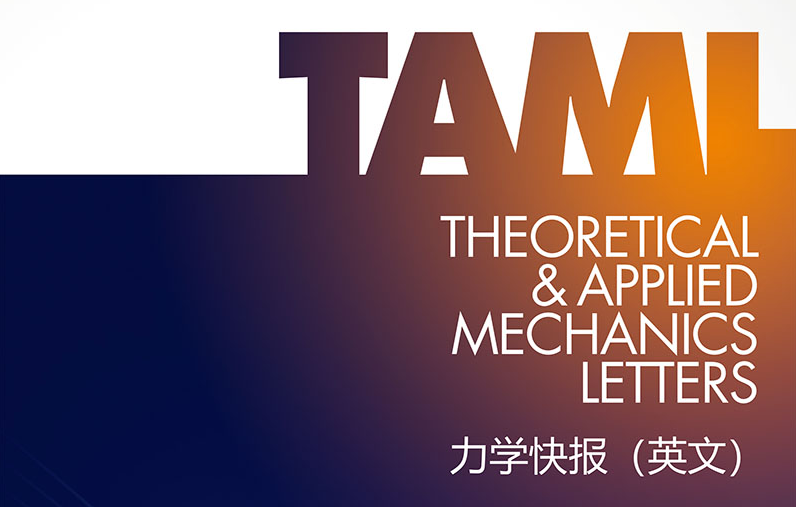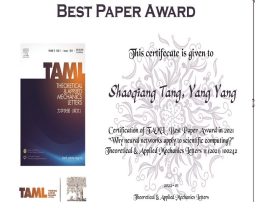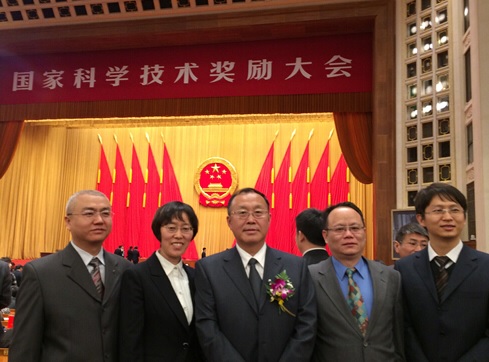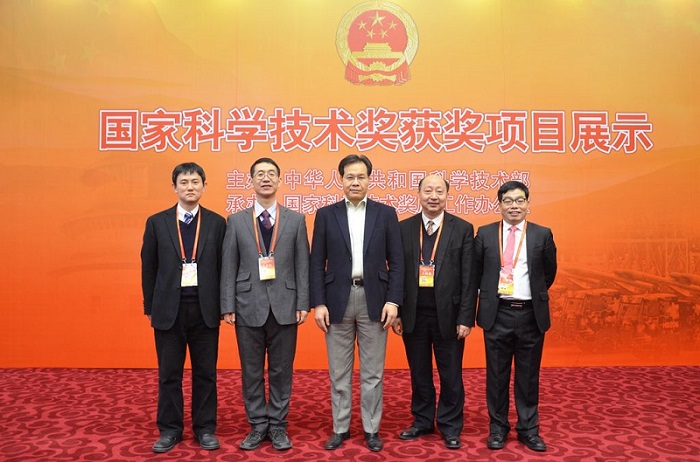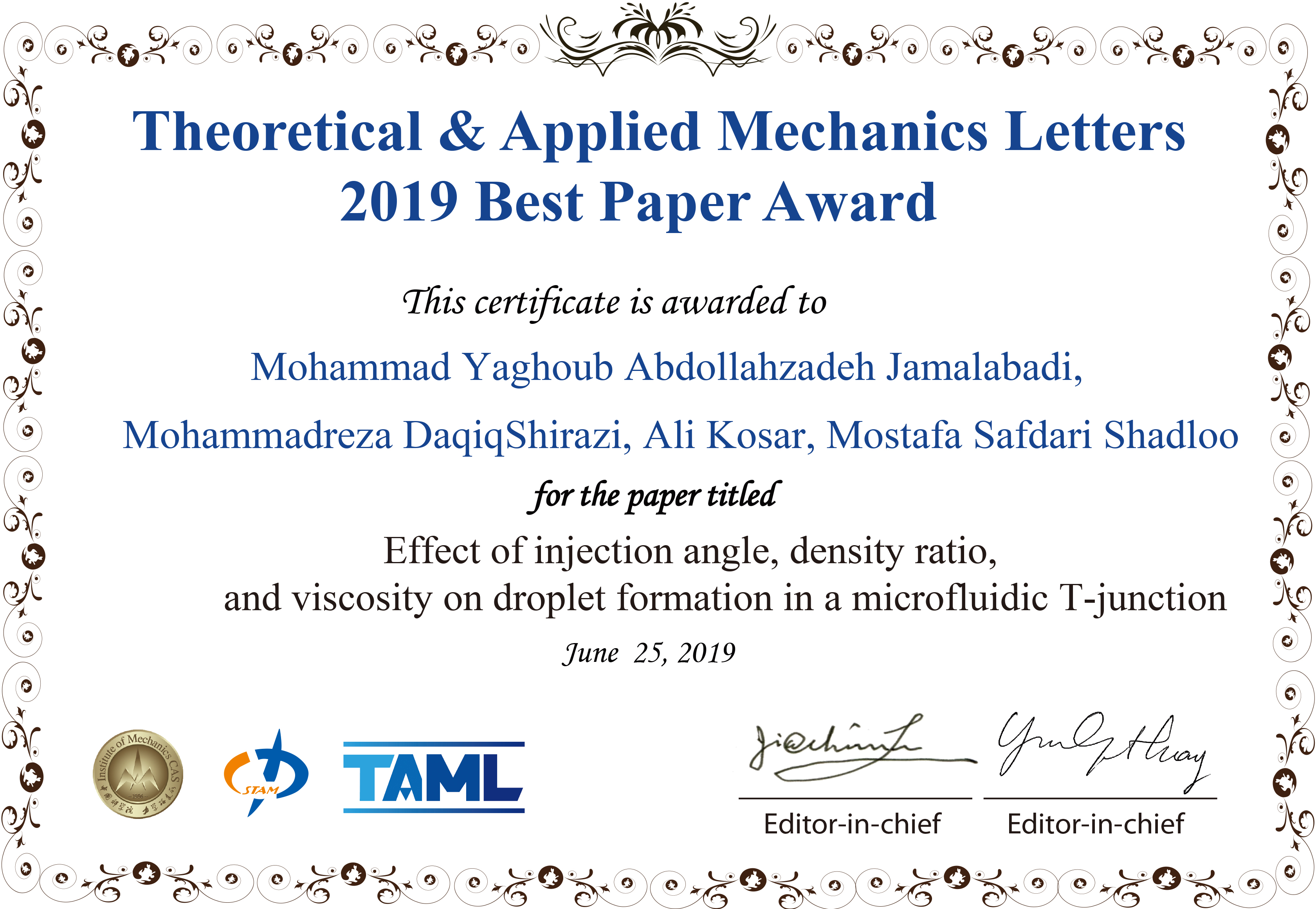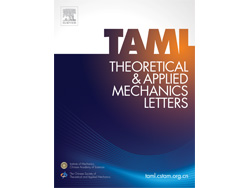Institute of Mechanics,
Chinese Academy of Sciences
2025 Vol.15(2)
Display Mode: |
Theoretical and Applied Mechanics Letters 15 (2025) 100564.
doi: 10.1016/j.taml.2024.100564
Abstract:
Machine learning (ML) techniques have emerged as powerful tools for improving the predictive capabilities of Reynolds-averaged Navier–Stokes (RANS) turbulence models in separated flows. This improvement is achieved by leveraging complex ML models, such as those developed using field inversion and machine learning (FIML), to dynamically adjust the constants within the baseline RANS model. However, the ML models often overlook the fundamental calibrations of the RANS turbulence model. Consequently, the basic calibration of the baseline RANS model is disrupted, leading to a degradation in the accuracy, particularly in basic wall-attached flows outside of the training set. To address this issue, a modified version of the Spalart-Allmaras (SA) turbulence model, known as Rubber-band SA (RBSA), has been proposed recently. This modification involves identifying and embedding constraints related to basic wall-attached flows directly into the model. It is shown that no matter how the parameters of the RBSA model are adjusted as constants throughout the flow field, its accuracy in wall-attached flows remains unaffected. In this paper, we propose a new constraint for the RBSA model, which better safeguards the law of wall in extreme conditions where the model parameter is adjusted dramatically. The resultant model is called the RBSA-poly model. We then show that when combined with FIML augmentation, the RBSA-poly model effectively preserves the accuracy of simple wall-attached flows, even when the adjusted parameters become functions of local flow variables rather than constants. A comparative analysis with the FIML-augmented original SA model reveals that the augmented RBSA-poly model reduces error in basic wall-attached flows by 50% while maintaining comparable accuracy in trained separated flows. These findings confirm the effectiveness of utilizing FIML in conjunction with the RBSA model, offering superior accuracy retention in cardinal flows.
Machine learning (ML) techniques have emerged as powerful tools for improving the predictive capabilities of Reynolds-averaged Navier–Stokes (RANS) turbulence models in separated flows. This improvement is achieved by leveraging complex ML models, such as those developed using field inversion and machine learning (FIML), to dynamically adjust the constants within the baseline RANS model. However, the ML models often overlook the fundamental calibrations of the RANS turbulence model. Consequently, the basic calibration of the baseline RANS model is disrupted, leading to a degradation in the accuracy, particularly in basic wall-attached flows outside of the training set. To address this issue, a modified version of the Spalart-Allmaras (SA) turbulence model, known as Rubber-band SA (RBSA), has been proposed recently. This modification involves identifying and embedding constraints related to basic wall-attached flows directly into the model. It is shown that no matter how the parameters of the RBSA model are adjusted as constants throughout the flow field, its accuracy in wall-attached flows remains unaffected. In this paper, we propose a new constraint for the RBSA model, which better safeguards the law of wall in extreme conditions where the model parameter is adjusted dramatically. The resultant model is called the RBSA-poly model. We then show that when combined with FIML augmentation, the RBSA-poly model effectively preserves the accuracy of simple wall-attached flows, even when the adjusted parameters become functions of local flow variables rather than constants. A comparative analysis with the FIML-augmented original SA model reveals that the augmented RBSA-poly model reduces error in basic wall-attached flows by 50% while maintaining comparable accuracy in trained separated flows. These findings confirm the effectiveness of utilizing FIML in conjunction with the RBSA model, offering superior accuracy retention in cardinal flows.
Theoretical and Applied Mechanics Letters 15 (2025) 100567.
doi: 10.1016/j.taml.2024.100567
Abstract:
The understanding of the impact of high-velocity microparticles on human skin tissue is important for the administration of drugs during transdermal drug delivery. This paper aims to numerically investigate the dynamic behavior of human skin tissue under micro-particle impact in transdermal drug delivery. The numerical model was developed based on a coupled smoothed particle hydrodynamics (SPH) and FEM method via commercial FE software RADIOSS. Analytical analysis was conducted applying the Poncelet model and was used as validation data. A hyperelastic one-term Ogden model with one pair of material parameters (µ, α) was implemented for the skin tissue. Sensitivity studies reveal that the effect of parameter α on the penetration process is much more significant than µ. Numerical results correlate well with the analytical curves with various particle diameters and impact velocities, its capability of predicting the penetration process of micro-particle impacts into skin tissues. This work can be further investigated to guide the design of transdermal drug delivery equipment.
The understanding of the impact of high-velocity microparticles on human skin tissue is important for the administration of drugs during transdermal drug delivery. This paper aims to numerically investigate the dynamic behavior of human skin tissue under micro-particle impact in transdermal drug delivery. The numerical model was developed based on a coupled smoothed particle hydrodynamics (SPH) and FEM method via commercial FE software RADIOSS. Analytical analysis was conducted applying the Poncelet model and was used as validation data. A hyperelastic one-term Ogden model with one pair of material parameters (µ, α) was implemented for the skin tissue. Sensitivity studies reveal that the effect of parameter α on the penetration process is much more significant than µ. Numerical results correlate well with the analytical curves with various particle diameters and impact velocities, its capability of predicting the penetration process of micro-particle impacts into skin tissues. This work can be further investigated to guide the design of transdermal drug delivery equipment.
Theoretical and Applied Mechanics Letters 15 (2025) 100568.
doi: 10.1016/j.taml.2024.100568
Abstract:
The Boussinesq equations, pivotal in the analysis of water wave dynamics, effectively model weakly nonlinear and long wave approximations. This study utilizes the complete discriminant system within a polynomial approach to derive exact traveling wave solutions for the coupled Boussinesq equation. The solutions are articulated through soliton, trigonometric, rational, and Jacobi elliptic functions. Notably, the introduction of Jacobi elliptic function solutions for this model marks a pioneering advancement. Contour plots of the solutions obtained by assigning values to various parameters are generated and subsequently analyzed. The methodology proposed in this study offers a systematic means to tackle nonlinear partial differential equations in mathematical physics, thereby enhancing comprehension of the physical attributes and dynamics of water waves.
The Boussinesq equations, pivotal in the analysis of water wave dynamics, effectively model weakly nonlinear and long wave approximations. This study utilizes the complete discriminant system within a polynomial approach to derive exact traveling wave solutions for the coupled Boussinesq equation. The solutions are articulated through soliton, trigonometric, rational, and Jacobi elliptic functions. Notably, the introduction of Jacobi elliptic function solutions for this model marks a pioneering advancement. Contour plots of the solutions obtained by assigning values to various parameters are generated and subsequently analyzed. The methodology proposed in this study offers a systematic means to tackle nonlinear partial differential equations in mathematical physics, thereby enhancing comprehension of the physical attributes and dynamics of water waves.
Theoretical and Applied Mechanics Letters 15 (2025) 100569.
doi: 10.1016/j.taml.2025.100569
Abstract:
Recent experiments have found that a liquid crystal elastomer (LCE) rod supported in the middle can rotate continuously under horizontal illumination due to the combined impacts of gravity and light-fueled lateral bending deformation. Similar to traditional gravity-driven systems, it is constrained by the direction of gravity and cannot be applied in microgravity environments. This study introduces a lateral constraint to a liquid crystal elastomer rod system, enabling self-rotation under lighting from any direction, including horizontal and vertical illumination. Through theoretical modeling, the results indicate that the system can steadily rotate under the combined impacts of lateral forces and vertical illumination. Factors like thermal energy flux, thermal conductivity coefficient, the LCE rod length, contraction coefficient, and friction coefficient affect the angular velocity of the self-rotation. The numerical computations align closely with the experimental data. Our proposed steadily self-rotating system features a simple structure with constant self-rotation. It operates independently of gravity direction, making it an excellent choice for special environments, such as the microgravity conditions on the Moon. The lateral constraint strategy presented in this study offers a general approach to expanding the applications of gravity-driven self-sustained motion, with promising potential, especially in microgravity settings, where its versatility under varying lighting conditions could yield valuable insights.
Recent experiments have found that a liquid crystal elastomer (LCE) rod supported in the middle can rotate continuously under horizontal illumination due to the combined impacts of gravity and light-fueled lateral bending deformation. Similar to traditional gravity-driven systems, it is constrained by the direction of gravity and cannot be applied in microgravity environments. This study introduces a lateral constraint to a liquid crystal elastomer rod system, enabling self-rotation under lighting from any direction, including horizontal and vertical illumination. Through theoretical modeling, the results indicate that the system can steadily rotate under the combined impacts of lateral forces and vertical illumination. Factors like thermal energy flux, thermal conductivity coefficient, the LCE rod length, contraction coefficient, and friction coefficient affect the angular velocity of the self-rotation. The numerical computations align closely with the experimental data. Our proposed steadily self-rotating system features a simple structure with constant self-rotation. It operates independently of gravity direction, making it an excellent choice for special environments, such as the microgravity conditions on the Moon. The lateral constraint strategy presented in this study offers a general approach to expanding the applications of gravity-driven self-sustained motion, with promising potential, especially in microgravity settings, where its versatility under varying lighting conditions could yield valuable insights.
Theoretical and Applied Mechanics Letters 15 (2025) 100570.
doi: 10.1016/j.taml.2025.100570
Abstract:
This study investigates the traction performance and efficiency of a conical friction continuously variable transmission. A new mathematical model was developed and validated through experimental measurements using a custom-built test rig to predict these parameters accurately. The results showed a close correlation between theoretical predictions and experimental data. Key findings include the impact of load on efficiency and the model's ability to predict performance under various operating conditions. The study provides detailed insights into the dynamics of conical friction variator and demonstrates the model's effectiveness in predicting real-world behavior. The developed model can assist in selecting optimal parameters during the design phase and can be applied to other developing variator systems to achieve maximum efficiency.
This study investigates the traction performance and efficiency of a conical friction continuously variable transmission. A new mathematical model was developed and validated through experimental measurements using a custom-built test rig to predict these parameters accurately. The results showed a close correlation between theoretical predictions and experimental data. Key findings include the impact of load on efficiency and the model's ability to predict performance under various operating conditions. The study provides detailed insights into the dynamics of conical friction variator and demonstrates the model's effectiveness in predicting real-world behavior. The developed model can assist in selecting optimal parameters during the design phase and can be applied to other developing variator systems to achieve maximum efficiency.
Theoretical and Applied Mechanics Letters 15 (2025) 100571.
doi: 10.1016/j.taml.2025.100571
Abstract:
Aerodynamic evaluation under multi-condition is indispensable for the design of aircraft, and the requirement for mass data still means a high cost. To address this problem, we propose a novel point-cloud multi-condition aerodynamics transfer learning (PCMCA-TL) framework that enables aerodynamic prediction in data-scarce scenarios by transferring knowledge from well-learned scenarios. We modified the PointNeXt segmentation architecture to a PointNeXtReg+ regression model, including a working condition input module. The model is first pre-trained on a public dataset with 2000 shapes but only one working condition and then fine-tuned on a multi-condition small-scale spaceplane dataset. The effectiveness of the PCMCA-TL framework is verified by comparing the pressure coefficients predicted by direct training, pre-training, and TL models. Furthermore, by comparing the aerodynamic force coefficients calculated by predicted pressure coefficients in seconds with the corresponding CFD results obtained in hours, the accuracy highlights the development potential of deep transfer learning in aerodynamic evaluation.
Aerodynamic evaluation under multi-condition is indispensable for the design of aircraft, and the requirement for mass data still means a high cost. To address this problem, we propose a novel point-cloud multi-condition aerodynamics transfer learning (PCMCA-TL) framework that enables aerodynamic prediction in data-scarce scenarios by transferring knowledge from well-learned scenarios. We modified the PointNeXt segmentation architecture to a PointNeXtReg+ regression model, including a working condition input module. The model is first pre-trained on a public dataset with 2000 shapes but only one working condition and then fine-tuned on a multi-condition small-scale spaceplane dataset. The effectiveness of the PCMCA-TL framework is verified by comparing the pressure coefficients predicted by direct training, pre-training, and TL models. Furthermore, by comparing the aerodynamic force coefficients calculated by predicted pressure coefficients in seconds with the corresponding CFD results obtained in hours, the accuracy highlights the development potential of deep transfer learning in aerodynamic evaluation.
Theoretical and Applied Mechanics Letters 15 (2025) 100572.
doi: 10.1016/j.taml.2025.100572
Abstract:
As an emerging multifunctional metal with the lowest melting point except for mercury, gallium combines a wide range of metallic and non-metallic elements to form advanced semiconductors critically important in cutting-edge technologies. However, due to its low melting point and poor machinability, it is quite difficult to simultaneously characterize gallium’s elastic properties and damping characteristics using conventional methods, which is essential in designing and evaluating gallium-based structures. Therefore, developing effective methods to achieve accurate and efficient measurements of Young’s modulus and corresponding internal friction of gallium is of great significance. This letter studies simultaneous measurements of the variations in Young’s modulus and internal friction of gallium at varying temperatures by employing the modified piezoelectric ultrasonic composite oscillator technique. Combining the explicit theoretical formulas with the measured resonance and anti-resonance frequencies, it has been discovered that Young’s modulus undergoes an approximately linear decrease as the temperature rises, declining from 83.84 GPa at -70 °C to 79.37 GPa at 20 °C. Moreover, like aluminum in the same Group ⅢA of the Periodic Table of Elements and exhibits a grain-boundary internal friction peak, gallium displays a longitudinal internal friction peak at approximately -12 °C, with the peak value reaching 1.77 × 10−3. This basic research on gallium’s elastic properties and damping characteristics under low-temperature conditions will inspire further explorations of the mechanical properties of a diverse spectrum of low-melting-point functional materials and facilitate applications of gallium-based structures under complex conditions.
As an emerging multifunctional metal with the lowest melting point except for mercury, gallium combines a wide range of metallic and non-metallic elements to form advanced semiconductors critically important in cutting-edge technologies. However, due to its low melting point and poor machinability, it is quite difficult to simultaneously characterize gallium’s elastic properties and damping characteristics using conventional methods, which is essential in designing and evaluating gallium-based structures. Therefore, developing effective methods to achieve accurate and efficient measurements of Young’s modulus and corresponding internal friction of gallium is of great significance. This letter studies simultaneous measurements of the variations in Young’s modulus and internal friction of gallium at varying temperatures by employing the modified piezoelectric ultrasonic composite oscillator technique. Combining the explicit theoretical formulas with the measured resonance and anti-resonance frequencies, it has been discovered that Young’s modulus undergoes an approximately linear decrease as the temperature rises, declining from 83.84 GPa at -70 °C to 79.37 GPa at 20 °C. Moreover, like aluminum in the same Group ⅢA of the Periodic Table of Elements and exhibits a grain-boundary internal friction peak, gallium displays a longitudinal internal friction peak at approximately -12 °C, with the peak value reaching 1.77 × 10−3. This basic research on gallium’s elastic properties and damping characteristics under low-temperature conditions will inspire further explorations of the mechanical properties of a diverse spectrum of low-melting-point functional materials and facilitate applications of gallium-based structures under complex conditions.
Theoretical and Applied Mechanics Letters 15 (2025) 100573.
doi: 10.1016/j.taml.2025.100573
Abstract:
The empirical models for wavenumber-frequency spectra of wall pressure are broadly used in the fast prediction of aerodynamic and hydrodynamic noise. However, it needs to fit the parameter using massive data and is only used for limited cases. In this letter, we propose Kolmogorov-Arnold networks (KAN) base models for wavenumber-frequency spectra of pressure fluctuations under turbulent boundary layers. The results are compared with DNS results. In turbulent channel flows, it is found that the KAN base model leads to a smooth wavenumber-frequency spectrum with sparse samples. In the turbulent flow over an axisymmetric body of revolution, the KAN base model captures the wavenumber-frequency spectra near the convective peak.
The empirical models for wavenumber-frequency spectra of wall pressure are broadly used in the fast prediction of aerodynamic and hydrodynamic noise. However, it needs to fit the parameter using massive data and is only used for limited cases. In this letter, we propose Kolmogorov-Arnold networks (KAN) base models for wavenumber-frequency spectra of pressure fluctuations under turbulent boundary layers. The results are compared with DNS results. In turbulent channel flows, it is found that the KAN base model leads to a smooth wavenumber-frequency spectrum with sparse samples. In the turbulent flow over an axisymmetric body of revolution, the KAN base model captures the wavenumber-frequency spectra near the convective peak.
Theoretical and Applied Mechanics Letters 15 (2025) 100574.
doi: 10.1016/j.taml.2025.100574
Abstract:
Fractional calculus is widely used to deal with nonconservative dynamics because of its memorability and non-local properties. In this paper, the Herglotz principle with generalized operators is discussed, and the Herglotz type equations for nonholonomic systems are established. Then, the Noether symmetries are studied, and the conserved quantities are obtained. The results are extended to nonholonomic canonical systems, and the Herglotz type canonical equations and the Noether theorems are obtained. Two examples are provided to demonstrate the validity of the methods and results.
Fractional calculus is widely used to deal with nonconservative dynamics because of its memorability and non-local properties. In this paper, the Herglotz principle with generalized operators is discussed, and the Herglotz type equations for nonholonomic systems are established. Then, the Noether symmetries are studied, and the conserved quantities are obtained. The results are extended to nonholonomic canonical systems, and the Herglotz type canonical equations and the Noether theorems are obtained. Two examples are provided to demonstrate the validity of the methods and results.
Theoretical and Applied Mechanics Letters 15 (2025) 100577.
doi: 10.1016/j.taml.2025.100577
Abstract:
Dynamic wake field information is vital for the optimized design and control of wind farms. Combined with sparse measurement data from light detection and ranging (LiDAR), the physics-informed neural network (PINN) frameworks have recently been employed for forecasting freestream wind and wake fields. However, these PINN frameworks face challenges of low prediction accuracy and long training times. Therefore, this paper constructed a PINN framework for dynamic wake field prediction by integrating two accuracy improvement strategies and a step-by-step training time saving strategy. The results showed that the different performance improvement routes significantly improved the overall performance of the PINN. The accuracy and efficiency of the PINN with spatiotemporal improvement strategies were validated via LiDAR-measured data from a wind farm in Shandong province, China. This paper sheds light on load reduction, efficiency improvement, intelligent operation and maintenance of wind farms.
Dynamic wake field information is vital for the optimized design and control of wind farms. Combined with sparse measurement data from light detection and ranging (LiDAR), the physics-informed neural network (PINN) frameworks have recently been employed for forecasting freestream wind and wake fields. However, these PINN frameworks face challenges of low prediction accuracy and long training times. Therefore, this paper constructed a PINN framework for dynamic wake field prediction by integrating two accuracy improvement strategies and a step-by-step training time saving strategy. The results showed that the different performance improvement routes significantly improved the overall performance of the PINN. The accuracy and efficiency of the PINN with spatiotemporal improvement strategies were validated via LiDAR-measured data from a wind farm in Shandong province, China. This paper sheds light on load reduction, efficiency improvement, intelligent operation and maintenance of wind farms.
 Submit a Paper
Submit a Paper
 Subscription
Subscription
News
MORE+
Call for Papers
MORE+
- Crossing-Mechanics Driven by Big Data
- Machine learning in the fluid mechanics research of wind energy
- Mechanics of Origami/Kirigami structures and metamaterials
- New insights and perspectives on impact biomechanics for human tissues: from injury prevention, protection to protective equipment
- Environmental Mechanics for Extreme Natural Events





